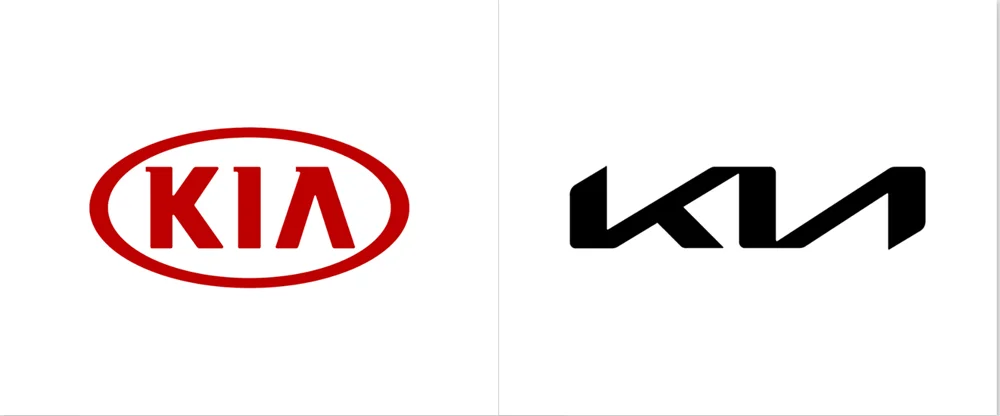Rebranding Strategy: How to Successfully Rebrand Your Business in 2026
Every brand evolves over time. However, there are moments when this evolution requires more than just minor updates—it calls for a complete business rebrand. Whether your current brand identity feels outdated, your audience has shifted, or your competitors are gaining ground, having a strong rebranding strategy can be the difference between losing relevance and achieving renewed business growth. A rebranding strategy should start with a thorough understanding of the business reason behind the rebranding, ensuring that the process is aligned with your company’s goals, challenges, and the company's vision for the future. It is essential to align the brand's identity, messaging, and touchpoints with the brand's core values and audience to ensure a successful outcome. The research phase is the critical first step in any rebranding strategy, providing insights that guide the entire process.
In this article, you will discover what a rebrand truly entails, recognize the signs that indicate it’s time to rebrand, learn how to rebrand a company step by step, avoid common pitfalls, and explore real-world examples of successful rebrands that underscore the power of doing it right.
What Is a Rebrand?
A business rebrand is much more than simply changing your logo or tweaking your color palette. It represents a strategic shift that redefines your brand identity and your brand's identity, reflecting its core essence and values through visual and messaging elements, market positioning, and messaging to better connect with your customers and reflect your company’s evolving goals.
The rebranding process often includes updating key visual elements such as your logo, color palette, and typography. For example, a company may shed its old logo or identity to adopt a more modern, streamlined image as part of the rebrand. It also involves rethinking your brand voice and messaging to resonate with your brand’s target market. Additionally, rebranding clarifies your brand position to reach a new market or better align with your company’s core values and vision for the future.
Ultimately, a rebrand ensures that your existing brand no longer feels like the old brand it once was but instead embodies a new brand identity that supports your business strategy and growth objectives. It is crucial to remain on brand throughout the process to ensure consistency and clarity.
When to Rebrand: Signs It’s Time
Not every company needs a full rebrand, but certain indicators suggest it might be necessary to reconsider your brand strategy. Sometimes, a partial rebrand—updating only certain elements of your brand—may be appropriate instead of a complete overhaul.
- Your brand identity feels outdated: If your current brand no longer reflects modern design trends or your company’s core values, it may be time for a refresh. An old logo or outdated color palette can make your business appear behind the times.
- Your audience has changed: When your target market shifts—perhaps you’re aiming for a younger audience or expanding into new customer segments—your brand voice and visual identity should evolve accordingly.
- Mergers and expansions: If your company has acquired another brand or merged with another business, a rebrand can unify multiple identities under one cohesive new brand. Integrating the acquired brand into your overall brand architecture is essential to avoid confusion and maximize success.
- Competitors look more relevant: If you find yourself losing market share because competitors have a stronger, more modern brand position, a rebrand can help you regain your footing.
- Your brand’s values have shifted: Over time, your company’s mission and vision might change. If your existing brand no longer longer reflects these core elements, a rebrand ensures your identity aligns with your new direction.
- Shifts in consumer preferences: Changes in consumer preferences and taste often lead companies to recognize the need for rebranding to maintain relevancy in a competitive market.
Recognizing when to rebrand is critical—acting too soon risks losing brand recognition, while waiting too long can lead to irrelevance.
Pre-Rebranding Considerations
Before you dive into the rebranding process, it’s essential to lay a solid foundation by carefully evaluating your current brand strategy and identity. Start by conducting a comprehensive review of your existing brand, including your visual identity, brand voice, and how your brand is currently perceived by your target market. Assess whether your mission statement and business strategy still align with your company’s goals and the needs of your target audience.
Take stock of your marketing materials and the capabilities of your marketing team and internal team to ensure you have the resources and expertise needed for a successful transition to a new brand identity. This is also the time to identify any gaps or weaknesses in your current approach that a rebrand could address. By thoroughly considering these factors upfront, you’ll be better positioned to develop a new brand that not only resonates with your audience but also drives business growth and strengthens your brand recognition in the marketplace.
Benefits of a Strong Brand Strategy in Rebranding
Implementing a well-planned rebranding process offers numerous advantages that can revitalize your business:
- It builds stronger brand recognition by refreshing your identity to stand out in your industry.
- Aligns your brand’s target market with your company’s mission, vision, and business strategy.
- Creates a modern visual identity that consumers trust and feel connected to.
- Clearly differentiates your brand from competitors, helping you capture more customers.
- Boosts engagement across all marketing materials, including your website, packaging, social media, and marketing collateral.
- Supports business growth by attracting both existing customers and new customers through a differentiated identity.
A comprehensive rebrand can breathe new life into your marketing efforts and strengthen your brand loyalty among both new and loyal customers. To maximize these benefits, it is essential to remain consistent in your messaging and visuals throughout the rebranding process.
Steps to Building a Rebranding Strategy
1. Research & Audit
The first step in any successful rebrand is conducting a thorough comprehensive audit of your existing brand. Identify which elements of your brand identity still resonate and which need to be updated or discarded. Solicit feedback through focus groups and surveys involving your internal team, existing clients, and even your brand’s target market. Analyze market trends and competitor positioning to inform your decisions.
2. Define Positioning & Vision
Next, clarify your company’s mission statement, vision, and brand personality. Decide what your new positioning will be and how your new brand identity will reflect your company’s core values. This phase ensures your rebrand aligns with your long-term business strategy and resonates with your desired audience. Defining the core brand identity is the foundation of a new brand story that should be authentic and relevant, helping to build a strong connection with your audience.
3. Refresh Brand Identity, Visual Identity & Messaging
This is the stage where your strategy meets design. Update your logo—whether it’s a complete redesign or a brand refresh—along with your color palette, typography, and other visual elements. New branding involves updating the company's visual identity, messaging, and overall perception to appeal to a broader audience. Craft a consistent brand voice and messaging framework that aligns with your new positioning. After the design updates, developing a new identity helps modernize the brand and reflect evolving values and market positioning. Develop new brand guidelines to maintain brand consistency across all platforms. A comprehensive brand guidelines document helps ensure consistent implementation of the new brand across all materials, providing a clear reference for all stakeholders.
4. Plan the Rollout
Successful rebrands require meticulous planning to ensure consistency. Determine how your new visual identity will be implemented across all touchpoints: websites, packaging, signage, social media, and marketing collateral. Coordinate with your marketing team and other departments to ensure everyone is on board and understands the new direction. A communication plan is essential for rolling out a rebrand both internally and externally to ensure all stakeholders are informed and aligned with the new brand vision. A well-coordinated rebrand launch is crucial—thorough preparation, clear communication, and tracking brand sentiment during this period help ensure a smooth transition and positive reception.
5. Communicate Clearly
Transparency is key to maintaining trust during a rebrand. Share the reasons behind the change, what it means for your customers, and how it benefits them. Use an internal announcement to rebrand internally first, ensuring your team is aligned and ready to represent the new brand. Then, launch your rebrand externally through a press release, blog posts, and updated marketing materials.


Brand Voice and Tone
Your brand voice and tone are the heartbeat of your brand’s identity, shaping how your business communicates and connects with your audience. A well-defined brand voice ensures that every message—whether it’s a social media post, email, or advertisement—sounds unmistakably like your brand. This consistency builds trust with existing customers and helps attract new customers who are drawn to your unique personality.
When crafting your brand voice and tone, consider your company’s core values, mission, and what sets you apart from competitors. For example, brands like Mailchimp have built a loyal following by using a friendly, approachable tone, while Nike’s empowering and motivational voice inspires action. By developing a differentiated identity through your brand voice, you’ll create a narrative that resonates with your target audience and supports your overall branding efforts. Consistency across all channels is key to reinforcing your brand and driving engagement.
Internal Team and Stakeholders
A successful company rebrand hinges on the support and alignment of your internal team and key stakeholders. Early and transparent communication about the reasons for the rebranding efforts, the vision for the new brand, and the expected outcomes is essential. Involve your internal team in the process by sharing new brand guidelines, visual identity updates, and the refreshed brand voice, ensuring everyone understands how to represent the new brand consistently.
Gathering feedback through focus groups or surveys with employees, partners, and other stakeholders can provide valuable insights and foster a sense of ownership in the rebranding journey. When your internal team is engaged and on the same page, they become powerful brand ambassadors, helping to ensure that your new brand is implemented smoothly and authentically across all touchpoints.
Customer Engagement and Loyalty
Engaging your customers and building loyalty are at the core of any effective rebranding strategy. By deeply understanding your target audience’s needs, preferences, and pain points, you can shape a new brand identity that truly resonates. Use market research, customer feedback, and analysis of market trends to inform your rebranding efforts, ensuring your new brand aligns with what your audience values most.
Prioritizing customer engagement throughout the rebranding process not only helps retain your loyal customer base but also opens doors to new customer segments and markets. A thoughtful rebrand can reinvigorate your brand’s reputation, spark word-of-mouth referrals, and drive business growth. By making your customers feel heard and valued, you’ll foster lasting brand loyalty and position your business for long-term success.





.jpg)